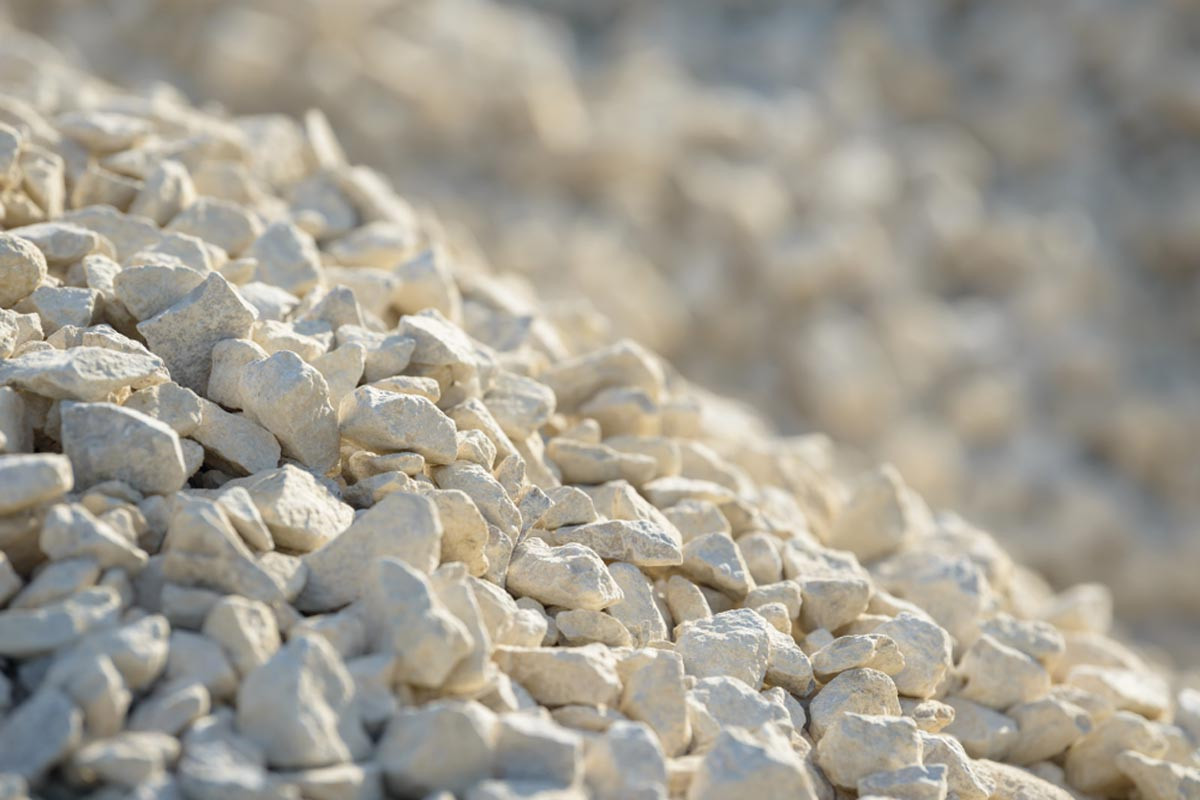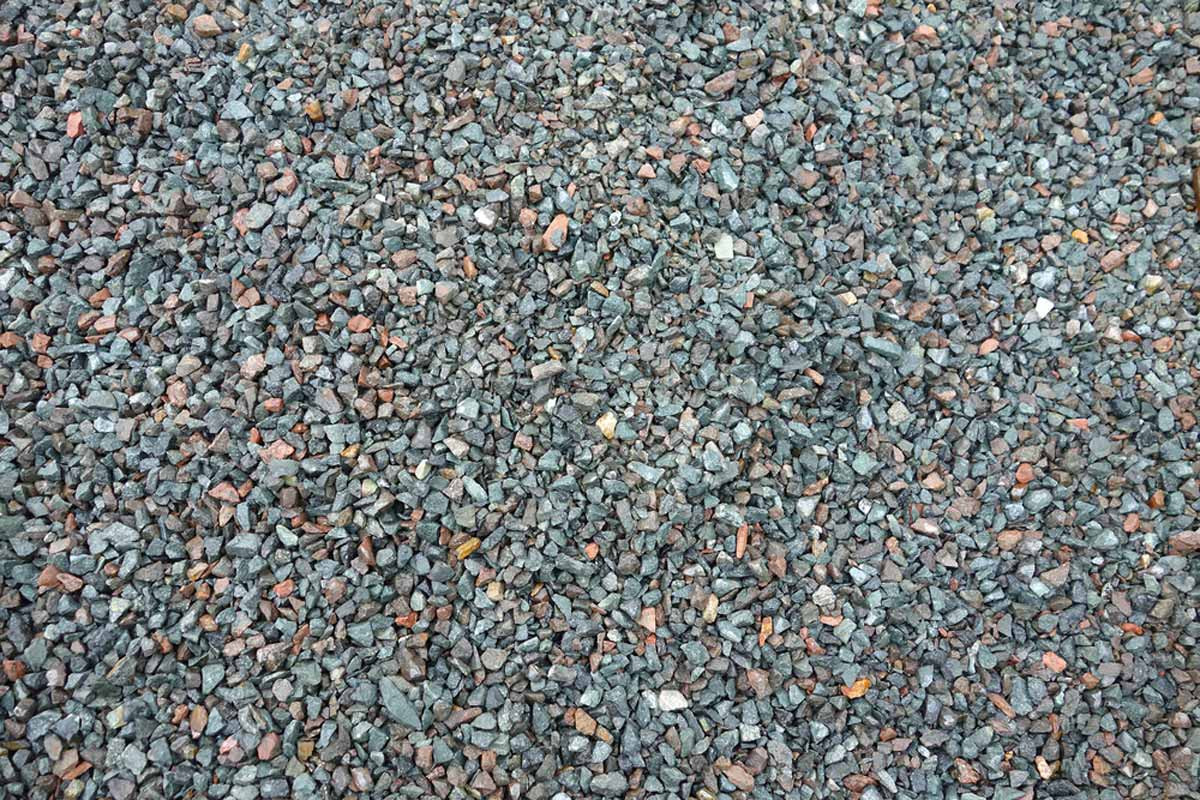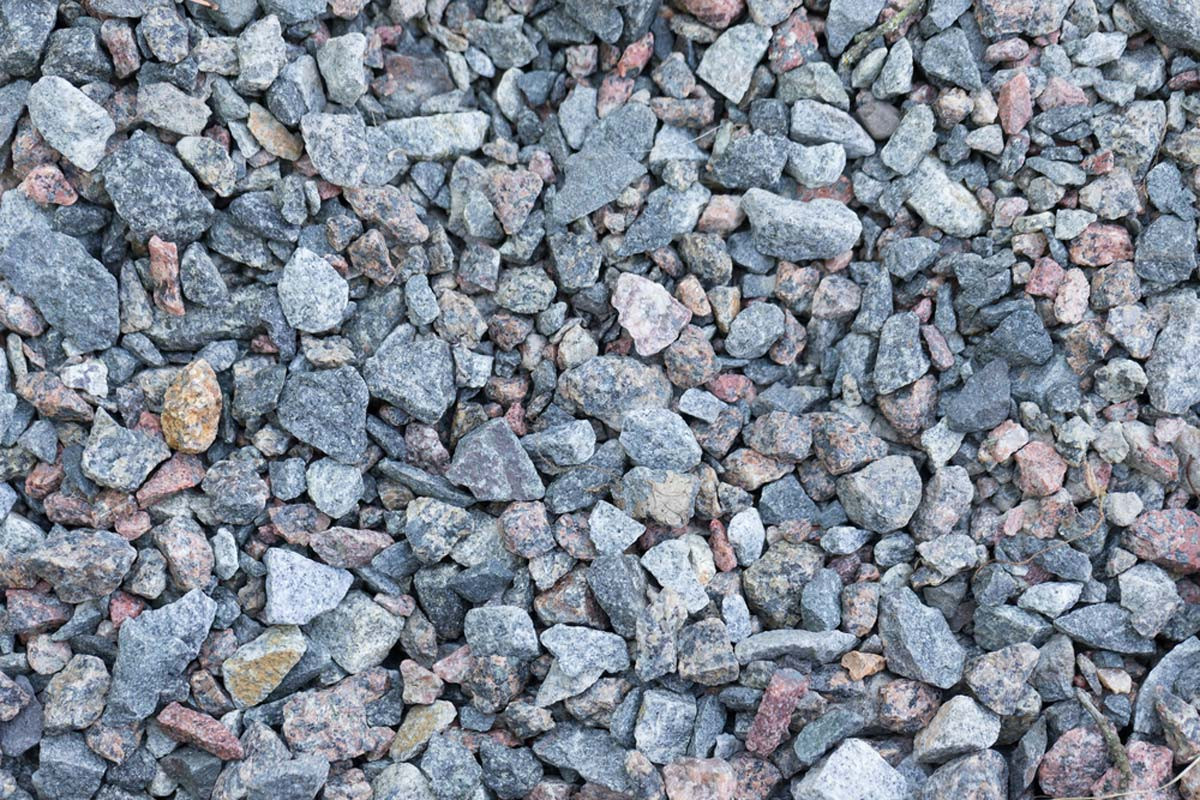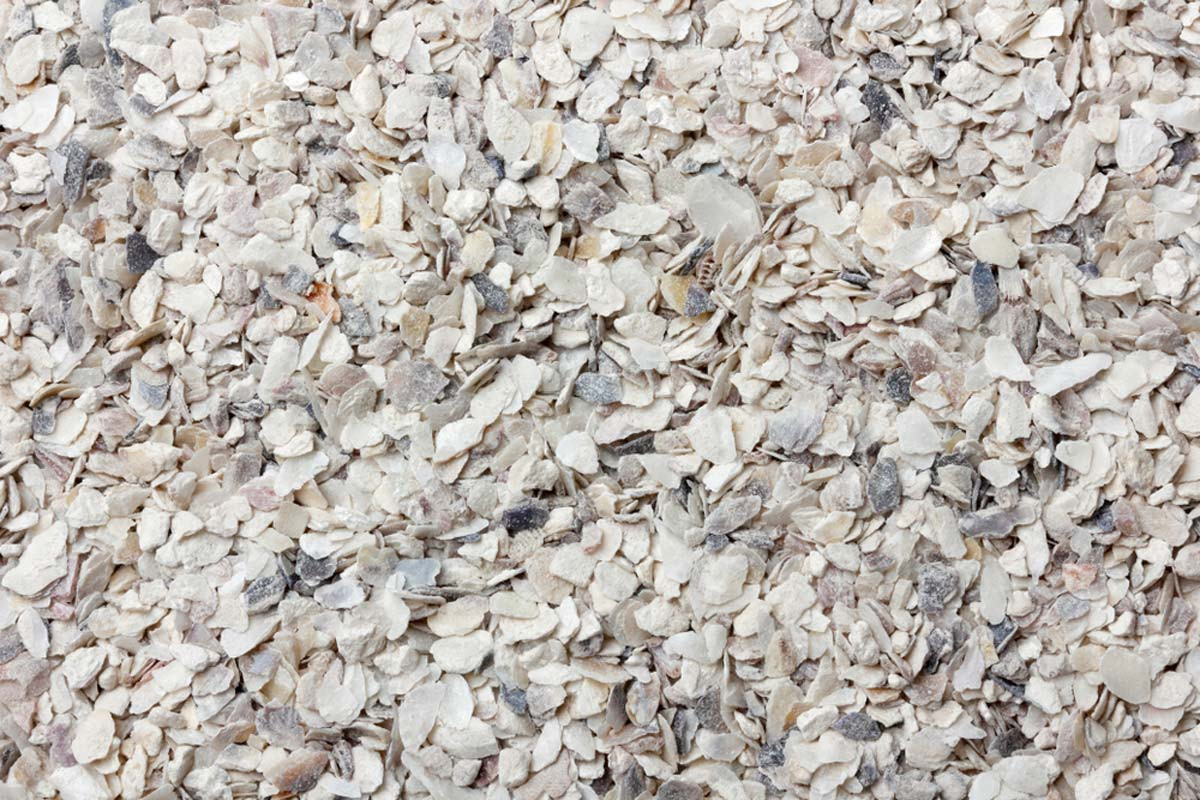Crushed rock per yard is a crucial element to understand when planning landscaping, driveways, or construction projects; let rockscapes.net be your guide. This comprehensive guide delves into the various factors influencing the cost of crushed rock, ensuring you make informed decisions for your next project.
1. Understanding Crushed Rock Costs: An Overview
Determining how much crushed rock costs per yard involves several variables, with a national average ranging from $15 to $75. This comprehensive guide from rockscapes.net breaks down the specifics, ensuring you’re well-informed for your project.
1.1. What Factors Influence Crushed Rock Prices?
Several elements affect the cost of crushed rock per yard, from the type of rock itself to transportation and quantity. Here’s a detailed breakdown:
- Type of Rock: Different rock types have varying costs due to their availability, processing requirements, and aesthetic appeal.
- Location: Quarry locations and transportation distances significantly impact prices. The closer you are to the source, the lower the delivery fees.
- Quantity: Buying in bulk generally lowers the per-yard cost. Suppliers often offer discounts for larger orders.
- Size and Grading: The size and grading of the crushed rock influence its price. Finer materials or specialty gradations may command higher prices.
- Delivery Costs: Hauling crushed rock involves transportation expenses, which depend on the distance, fuel costs, and equipment used.
- Market Demand: Seasonal demand and regional economic conditions can also cause fluctuations in prices.
1.2. Types of Crushed Rock and Their Costs
The variety of crushed rock available each has a different price point depending on its unique characteristics and applications. Common types and their average costs per yard include:
- Limestone: $35 – $54 per cubic yard
- Granite: $38 – $75 per cubic yard
- Gravel: $15 – $75 per cubic yard
- Recycled Concrete: $16 – $75 per cubic yard
- River Rock: $47 – $70 per cubic yard
- Crush and Run: $51 – $54 per cubic yard
- Caliche: $31 – $178 per cubic yard
 Pile of crushed limestone gravel size 411
Pile of crushed limestone gravel size 411
alt: Crushed limestone gravel pile showcases size 411 in natural light, ideal for landscaping projects.
1.3. Breaking Down the Cost: Materials, Delivery, and Labor
The cost of crushed rock goes beyond just the material itself. Understanding the breakdown helps in budgeting accurately:
- Materials: This is the cost of the crushed rock itself, varying by type and quantity.
- Delivery: Delivery costs depend on distance, fuel, and the supplier’s rates. Some suppliers offer free delivery within a certain radius.
- Labor: If you’re hiring a professional for spreading or installation, labor costs will add to the total expense. This can range from $40 to $50 per hour.
2. Crushed Rock Pricing: Detailed Breakdown
To understand the costs of crushed rock fully, let’s delve into the specifics. Below are detailed cost breakdowns by volume, type, and application.
2.1. Cost Per Ton vs. Cost Per Yard
Crushed rock is commonly sold by the ton or by the cubic yard. It’s important to understand the difference:
- Cost Per Ton: Generally ranges from $10 to $50. A ton is a weight measurement, useful for large-scale projects.
- Cost Per Cubic Yard: Ranges from $15 to $75. A cubic yard is a volume measurement, ideal for estimating how much material you need to fill a specific area.
One cubic yard typically contains 1.4 to 1.5 tons of stone. Always clarify with your supplier whether the price includes delivery and any additional fees.
2.2. Average Crushed Rock Prices Per Cubic Yard
Here’s a more detailed look at the average costs per cubic yard for various types of crushed rock:
- Crushed Gravel Mix: $10 to $20 per cubic yard
- Pea Gravel: $29 to $86 per cubic yard
- River Rock: $47 to $70 per cubic yard
- Crushed Limestone: $35 to $54 per cubic yard
- Crushed Concrete: $16 to $75 per cubic yard
- Crushed Granite: $38 to $75 per cubic yard
- Caliche: $31 – $178 per cubic yard
- Steel Slag Rock: $35 to $54 per cubic yard
- Crushed Shells: $14 to $120 per cubic yard
- Shale Gravel: $28 to $85 per cubic yard
 Multi colored rounded river rocks for landscaping
Multi colored rounded river rocks for landscaping
alt: Landscaping featuring multi-colored rounded river rocks, enhancing garden aesthetics and providing functional drainage.
2.3. Cost Per Square Foot: A Useful Metric for Smaller Projects
For smaller landscaping projects, knowing the cost per square foot can be more useful:
- Base Gravel: $0.50 to $1.50 per square foot
- Colored and Decorative Gravel: $2 to $4 per square foot
These costs assume a depth of 12 inches. Adjust the price accordingly based on your desired depth.
3. Application-Specific Crushed Rock Costs
The type of project you’re undertaking also influences the kind and amount of crushed rock needed, thus affecting the overall cost.
3.1. Driveway Construction
For driveways, the cost varies depending on the size and depth required. Here are some estimates:
- Single-Car Driveway (12’x25′): $300 to $900 for materials
- Double-Car Driveway (24’x24′): $600 to $1,800 for materials
These costs generally include the gravel needed for a 4″ to 8″ depth.
3.2. Landscaping Projects
Landscaping projects can range from simple pathways to elaborate garden designs. Costs vary accordingly:
- Walkway or Flower Bed (4’x20′): $100 to $300
- Gravel Patio or Landscaping (10’x20′): $250 to $700
3.3. Road Base and Construction
For road base, the type and quantity of crushed rock are critical. Road base gravel typically costs:
- Per Ton: $18 to $31
- Per Cubic Yard: $25 to $62
- Per Square Foot: $0.59 to $1.50
 Crush and run gravel quarry process 411 up close
Crush and run gravel quarry process 411 up close
alt: Up-close view of crush and run gravel, featuring a mix of rock sizes ideal for creating stable road bases and pathways.
4. Factors Affecting Delivery Costs
Delivery costs can significantly impact the total expense of your crushed rock project. Understanding these factors can help you minimize costs.
4.1. Distance and Location
The farther you are from the quarry or supplier, the higher the delivery costs. Suppliers often charge a base fee plus a per-mile charge beyond a certain radius.
4.2. Order Size and Truckload Options
Larger orders often qualify for discounted delivery rates. Some suppliers offer free delivery for orders above a certain tonnage (e.g., 5 tons). A full truckload (10 cubic yards or more) typically costs $1,350 or more, including delivery and spreading.
4.3. DIY Hauling vs. Professional Delivery
If you have a suitable vehicle, you can haul crushed rock yourself to save on delivery fees. Renting a dump truck or pickup costs $70 to $80 per day. However, consider the time, effort, and potential wear and tear on your vehicle.
5. Crushed Rock: A Detailed Look at Different Types
Choosing the right type of crushed rock is essential for the success and longevity of your project. Here’s a closer look at some popular options.
5.1. Limestone: A Versatile Option
Crushed limestone is a common choice for driveways, pathways, and landscaping. It is readily available and relatively affordable.
- Cost: $30 to $38 per ton or $35 to $54 per cubic yard.
- Pros: Versatile, readily available, relatively inexpensive.
- Cons: Can be dusty, may alter soil pH in landscaping applications.
5.2. Granite: Durability and Aesthetics
Crushed granite offers excellent durability and a distinctive look, making it suitable for decorative landscaping and driveways.
- Cost: $25 to $50 per ton or $38 to $75 per cubic yard.
- Pros: Durable, aesthetically pleasing, good drainage.
- Cons: More expensive than limestone, may require professional installation for optimal results.
 Up close view of crushed granite gravel
Up close view of crushed granite gravel
alt: Close-up of crushed granite gravel, showcasing its angular texture and varied coloration, perfect for decorative landscaping and durable pathways.
5.3. Pea Gravel: Smooth and Decorative
Pea gravel is small, smooth, and rounded, making it ideal for pathways, playgrounds, and decorative landscaping.
- Cost: $28 to $45 per ton or $29 to $86 per cubic yard.
- Pros: Smooth texture, decorative appeal, good drainage.
- Cons: Can move around easily, not ideal for high-traffic areas, retains more heat than other gravels.
5.4. River Rock: Natural and Polished
River rock offers a natural, polished look, perfect for landscaping, garden beds, and water features.
- Cost: $33 to $49 per ton or $47 to $70 per cubic yard.
- Pros: Aesthetically pleasing, durable, good for drainage.
- Cons: Can be more expensive, may require a base layer for stability.
5.5. Crushed Concrete: Eco-Friendly and Cost-Effective
Crushed concrete is an environmentally friendly option made from recycled concrete. It provides a cost-effective base for driveways and pathways.
- Cost: $11 to $53 per ton or $16 to $75 per cubic yard.
- Pros: Eco-friendly, cost-effective, durable.
- Cons: May contain debris, not as aesthetically pleasing as other options.
6. Installation Tips and Considerations
Proper installation is crucial for ensuring the longevity and functionality of your crushed rock project.
6.1. Preparing the Base
A well-prepared base is essential for preventing settling, weed growth, and drainage issues.
- Clear the Area: Remove all vegetation, rocks, and debris.
- Grade the Soil: Ensure a slight slope for proper drainage.
- Compact the Soil: Use a plate compactor to create a firm, stable base.
- Add Landscape Fabric: This prevents weed growth and keeps the crushed rock separate from the soil.
6.2. Spreading and Leveling
Evenly spreading and leveling the crushed rock ensures a uniform appearance and optimal functionality.
- Use a Wheelbarrow: Transport the crushed rock to the project area.
- Spread Evenly: Use a rake or shovel to distribute the material evenly.
- Level the Surface: Use a level to ensure a flat, even surface.
- Compact the Crushed Rock: Use a plate compactor to lock the stones together.
6.3. Drainage Solutions
Proper drainage prevents water from pooling and causing damage. Consider these solutions:
- Slope the Surface: A slight slope allows water to run off.
- Install Drainage Pipes: These carry water away from the project area.
- Use Permeable Materials: Crushed rock allows water to drain through.
7. Exploring Lesser-Known Crushed Rock Options
Beyond the typical limestone and granite, several other crushed rock options offer unique benefits and aesthetics.
7.1. Steel Slag: A Durable and Economical Choice
Steel slag, a byproduct of steel manufacturing, presents a durable and economical option for various applications.
- Cost: $25 to $39 per ton or $35 to $54 per cubic yard.
- Pros: High durability, excellent compaction, and cost-effective.
- Cons: Best suited for drier climates due to potential leaching of minerals.
7.2. Caliche: The Southwestern Native
Caliche, a sedimentary rock found in arid and semi-arid regions like Arizona, can be an excellent locally-sourced option.
- Cost: $45 to $100 per ton and $30 to $80 per cubic yard.
- Pros: Readily available in certain regions, natural look, and can blend well with desert landscapes.
- Cons: May require careful selection to ensure quality and proper compaction.
7.3. Crushed Shells: An Eco-Friendly Coastal Alternative
Crushed shells offer an environmentally friendly and aesthetically pleasing option, particularly in coastal areas.
- Cost: $1 to $3 per square foot, $35 to $45 per cubic yard, or $45 to $55 per ton.
- Pros: Eco-friendly, helps deter weeds and pests, and improves soil conditions.
- Cons: Availability may be limited to coastal regions, and specific shell types can affect cost.
 Crushed oyster shells used for gravel paving
Crushed oyster shells used for gravel paving
alt: Crushed oyster shells create a unique and eco-friendly gravel paving material, ideal for coastal landscapes and sustainable projects.
8. Cost-Saving Strategies for Your Crushed Rock Project
Budgeting wisely is key to any successful project. Here are some strategies to save money on your crushed rock project.
8.1. Buy in Bulk
Purchasing crushed rock in bulk often results in significant savings per yard.
8.2. Compare Multiple Suppliers
Get quotes from several suppliers to ensure you’re getting the best price. Don’t forget to factor in delivery costs and potential discounts.
8.3. Time Your Purchase Wisely
Prices may fluctuate seasonally. Buying during off-peak times can save you money.
8.4. Consider Recycled Materials
Recycled concrete and asphalt are often cheaper than virgin materials and offer environmental benefits.
8.5. DIY When Possible
If you’re comfortable with manual labor, doing the spreading and leveling yourself can save on labor costs.
9. Maintenance and Longevity
Proper maintenance ensures that your crushed rock installation lasts for years.
9.1. Regular Raking and Leveling
Raking and leveling the surface periodically keeps the area looking tidy and prevents uneven settling.
9.2. Weed Control
Use a pre-emergent herbicide or hand-pull weeds regularly to prevent them from taking root in the crushed rock.
9.3. Replenishing Material
Over time, some crushed rock may settle or wash away. Replenish the material as needed to maintain the desired depth and appearance.
9.4. Preventing Soil Contamination
Ensure the underlying landscape fabric remains intact to prevent soil from mixing with the crushed rock, which can lead to weed growth and instability.
10. Frequently Asked Questions (FAQs)
Here are some common questions about crushed rock costs and applications.
10.1. How much gravel do I need?
Calculate the total volume by multiplying the length, width, and desired depth (in feet). Divide the result by 27 to get cubic yards.
10.2. Where can I buy gravel?
You can purchase gravel from home improvement stores, rock quarries, landscaping centers, and online suppliers.
10.3. How much does a ton of gravel cover?
A ton of gravel covers approximately 80 to 100 square feet at a depth of 2 inches.
10.4. Is it cheaper to buy gravel by the ton or by the yard?
It depends on the supplier and the quantity you need. Compare the prices per ton and per cubic yard to determine the most cost-effective option.
10.5. What is crusher run gravel used for?
Crusher run is a mixture of crushed rock and stone dust, used as a base for driveways, pathways, and patios due to its excellent compaction properties.
10.6. Can I use gravel for a French drain?
Yes, gravel is an excellent material for French drains due to its permeability and ability to facilitate water drainage.
10.7. How do I prevent weeds from growing in my gravel driveway?
Use landscape fabric beneath the gravel and apply a pre-emergent herbicide to prevent weed growth.
10.8. What is the best type of gravel for a walkway?
Pea gravel and decomposed granite are popular choices for walkways due to their smooth texture and aesthetic appeal.
10.9. How often should I replenish the gravel in my driveway?
Replenish the gravel every 1 to 2 years, or as needed, to maintain the desired depth and appearance.
10.10. What are the benefits of using recycled concrete as a base material?
Recycled concrete is cost-effective, environmentally friendly, and provides a durable base for various applications.
Navigating the world of crushed rock costs can seem daunting, but with the right information and resources, you can make informed decisions that fit your budget and project needs. Remember to consider all factors, from the type of rock to delivery and installation costs, to ensure a successful outcome. For inspiration, detailed product information, and expert advice, visit rockscapes.net and transform your landscape into a stunning rock masterpiece. Contact us at Address: 1151 S Forest Ave, Tempe, AZ 85281, United States or Phone: +1 (480) 965-9011.